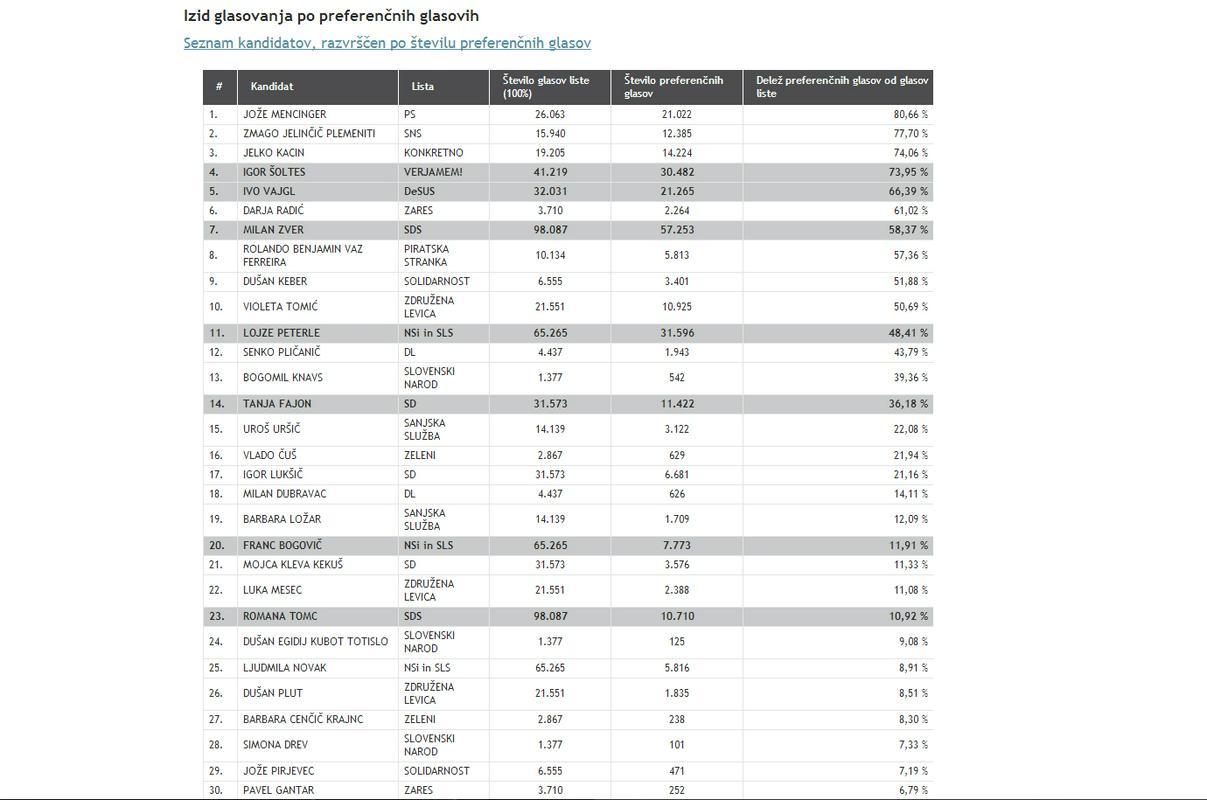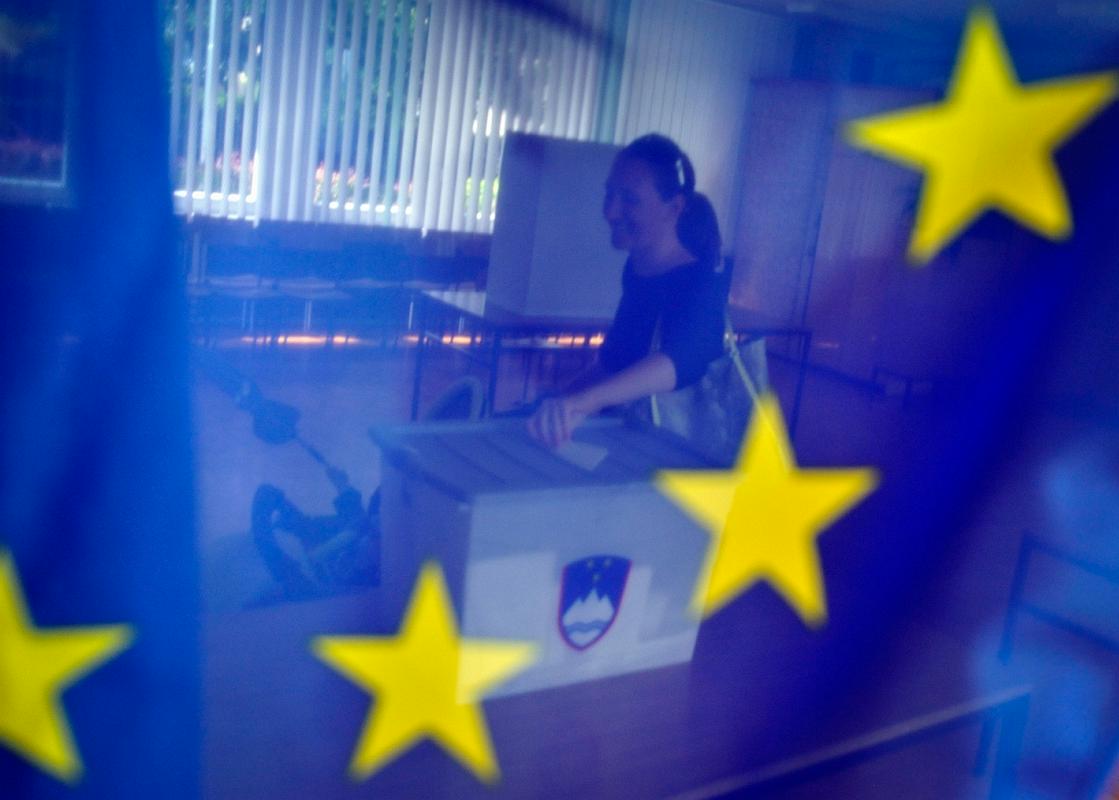

While according to partial unofficial data published by the Slovenian State Voting Commission (DVK) Milan Zver, who won the most votes, brought only a little over half of the votes to his party (he received a preference vote by 57,253 voters out of 98,087 that voted for the Slovenian Democratic Party (SDS)) and Lojze Peterle obtained a preference vote from almost half of the NSi+SLS union ballot voters, two politicians who were not elected, Jože Mencinger and Zmago Jelinčič Plemeniti, more or less got the majority of their parties' votes.
21,022 voters gave their preference vote to Mencinger (his party, Positive Slovenia, got only 5,000 votes more in total), and an odd 12,000 people decided for Jelinčič, which represents 77.7% of the total votes for his party, the Slovenian National Party (SNS). Jelko Kacin, who failed to win his third mandate in the European Parliament (EP), also won the majority of votes for his ballot named Konkretno (14,224 out of 19,205), which is not surprising, since Kacin decided to run with his own independent ballot.
Šulin won fewer votes than her colleagues
On the other hand, the third-placed on SDS' ballot, Patricija Šulin, won a seat in the EP with a good 1,000 preference votes, which placed her as 31st among 118 candidates for EP, putting her far behind all other elected deputies in terms of the number of preference votes. The other seven, as mentioned, owe winning their seat in the EP precisely to preference votes. Interestingly, in addition to Zver and Romana Tomc (who were elected) those from SDS' ballot who also received more preference votes than Šulin were Andrej Šircelj (1,765), Damijan Terpin (1,222) and Anže Logar (1,143).
Tanja Fajon, who – unlike Zver, Peterle, Šoltes and Vajgl – was not a ballot holder, was also elected, which was quite a surprise. Her party, the Social Democrats (SD), won 8% or an odd 31 thousand votes, with Fajon winning 11,422 votes and Igor Lukšič, the party's president and the first name on the ballot, receiving almost half fewer votes, 6,681.
President of SLS qualifies from 8th place
Election results caused a slight stir in the relationship between the “united” parties, the Slovenian People’s party (SLS) and New Slovenia (NSi). In total, they won 65,265 votes or 16.56% of all votes, with almost half of the votes won by Peterle (31,596 votes or 48%) and 7,773 by Franc Bogovič, who was the last, eight, candidate on the ballot. In terms of the number of preference votes, he beat the second-placed candidate, Aleš Hojs (1,541 preference votes), as well as NSi’s president (and seventh-placed) Ljudmila Novak.
2009: First on the ballot, first to the parliament
Five years ago nobody won a seat in Brussels through preference votes. All elected candidates won the most preference votes, but they were also ballot holders or on the second place. In 2009 the following were elected: NSi’s ballot holder Lojze Peterle (43,499 preference votes), the first two on SD’s ballot, Zoran Thaler (38,849) – who later stepped down due to bribery allegations and was replaced by Mojca Kleva Kekuš – and Tanja Fajon (12,947 preference votes), the first two on SDS’s ballot, Milan Zver (70,044) and Romana Jordan (8,422), the first on Zares’ ballot, Ivo Vajgl (21,031 preference votes), and Jelko Kacin on LDS’ ballot (36,868 votes).
SDS later acquired another EP member due to the Lisbon treaty, with Zofija Mazej Kukovič taking the seat. The number of votes cannot be directly compared, since the turnout at the previous two elections was slightly higher, at 28 per cent.
Tanja Kozorog Blatnik, MMC;
translated by K. Z.






























































